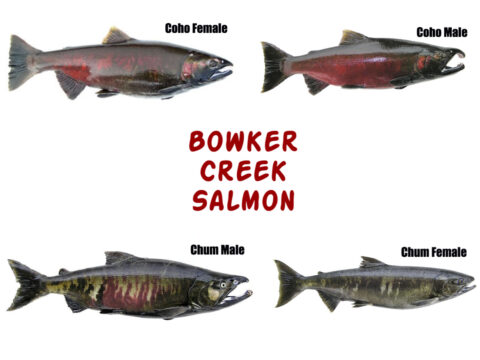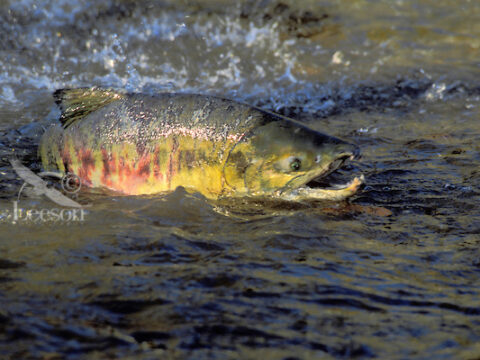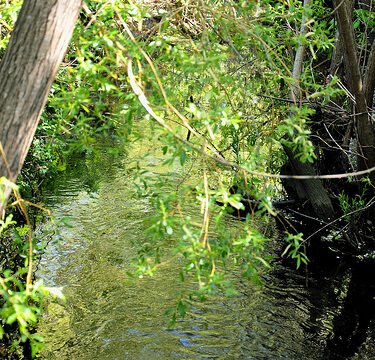
By OB23
The creekbed took a lot of design, research and thought. These curves benefit smaller creatures, by providing small areas for them to find shelter from the current. This supports more life in the stream. When the water rises, it flows in a predetermined way, purposefully designed for better flow and to reduce plant uprooting.

By OB27
There were two main types of Salmon that inhabited Bowker Creek; The Chum Salmon and the Coho Salmon. Above you will see a photo I created showing you the two different types of Salmon, male and female.

By OB24
If salmon were to return to Bowker Creek, they would not only help the creek to reach a climax community, they would increase Bower Creek's connection to the community. Having salmon would make more people interested in helping with the restoration and learning about Victoria's ecosystems.

By OB24
Nitrates get into Bowker Creek through garden and road runoff containing plant fertilizers. As there are few nitrate free fertilizers, a way to reduce the nitrate levels in the creek would be to control the amount of fertilizers used near the creek. If this problem were to be fixed, there could be enough dissolved oxygen for salmon.

By OB24
Could the salmon get through the tunnels at Bowker Creek? Most of the tunnels would be easy for the salmon to swim through; the only problem would be the sloped tunnel under Fireman's Park. The angle of the tunnel would prevent salmon from swimming up it. For salmon to swim through the creek, a small fish ladder must be put in this tunnel.

By OB23
The planning of Bowker creek's plants was very thorough, as it needed to be a) aesthetically pleasing, b) Help filter toxins out of the water and c) discourage invasive plant growth.

By OB23

By OB23
One of the conditions of Bowker being renovated was that Oak Bay High school would need to take some responsibility in the maintenance and use of the surrounding area. This led to the creation of the outdoor classroom, which is essentially an amphitheater. Its main use is for quick meetings centered around ecological topics.
